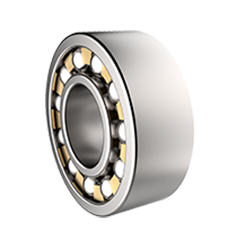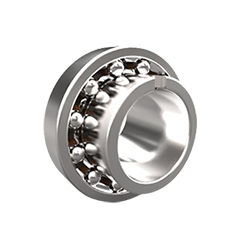Self-aligning Ball Bearing vs Basic Ball Bearing
Self-aligning ball bearings are usually composed of an outer ring with a spherical raceway, a double raceway inner ring, two rows of steel balls and a cage. The inner ring with two rows of steel balls and the cage can swing at a certain angle along the outer ring spherical raceway. Compared with ordinary ball bearings, this allows self-aligning linear ball bearings to work normally even when the shaft is slightly misaligned with respect to the bearing housing. Therefore, the self aligning linear ball bearings are especially suitable for the application of misalignment caused by a component structure that is difficult to ensure installation accuracy or shaft deflection, and solves the problem that ordinary ball bearings need to be accurately aligned, and can be used in many scenes that are difficult to accurately align. However, under the premise of not achieving precise alignment, although self-aligning ball bearings can operate normally, they cannot adapt to excessively fast working speeds. Therefore, compared with ordinary ball bearings, self-aligning ball bearings are usually used in occasions where the speed is not high, the requirements for noise and vibration are not high, and the installing and the un-installing are difficult.
Choice and Installation of Self-aligning Ball Bearing
We usually choose the bearing products according to the specific application, like the load, speed and space constraints, etc. But when choosing a self-aligning ball bearing, we not only need to choose it according to the load, speed and space constraints of the application scenario, but also need to consider the amount of misalignment and shaft deflection. The basic design of a self-aligning ball bearing has a cylindrical hole, or in some size ranges, a tapered hole. We usually will choose to heat the bearing before installing it. However, if the bearing needs to be cold-mounted in special circumstances, the installation tool must be a special sleeve tool to ensure that the installation force will not be transmitted through the steel ball during the installation process, so that the steel balls and raceways will not be damaged during the installation process. If the bearing has a tapered hole, it can also be installed using a two-step hydraulic drive method.

 English
English français
français Deutsch
Deutsch italiano
italiano

